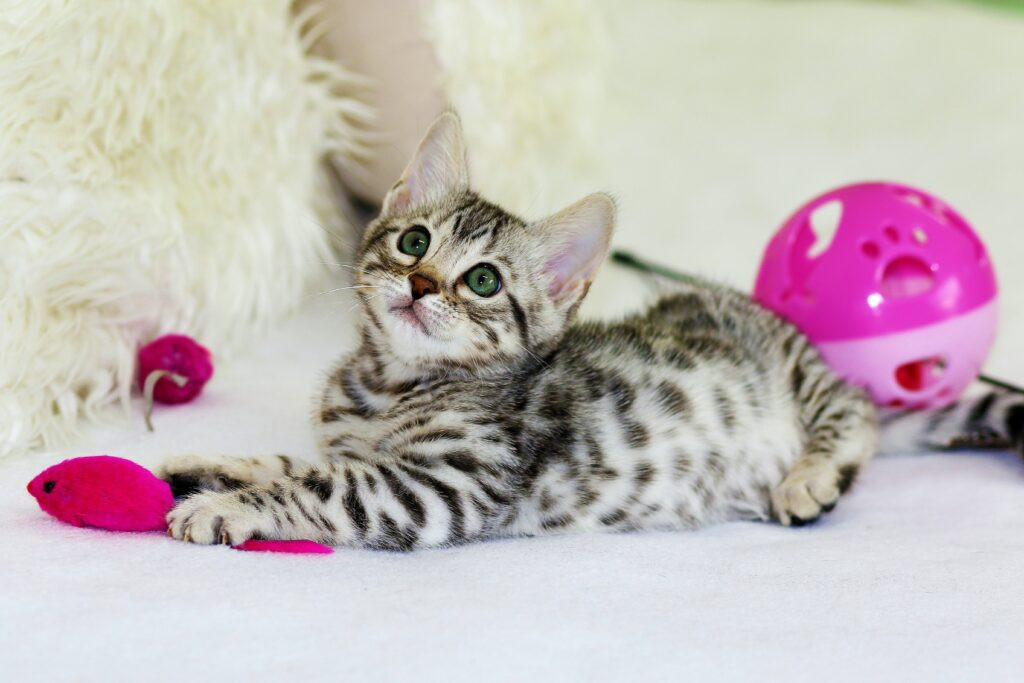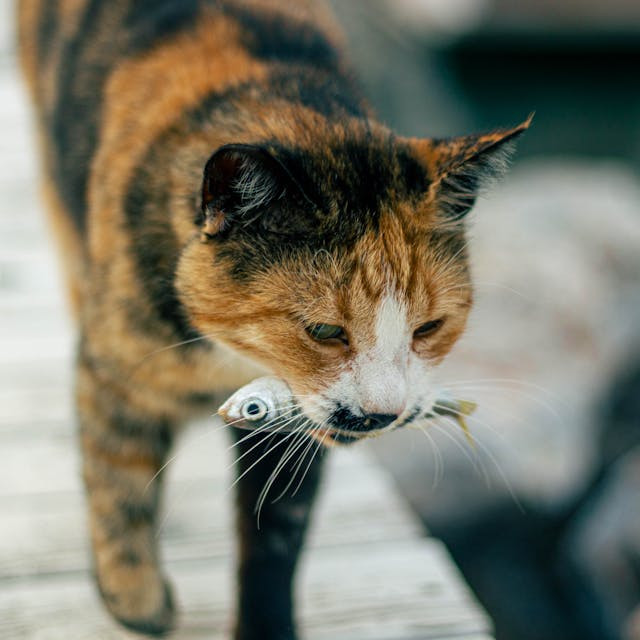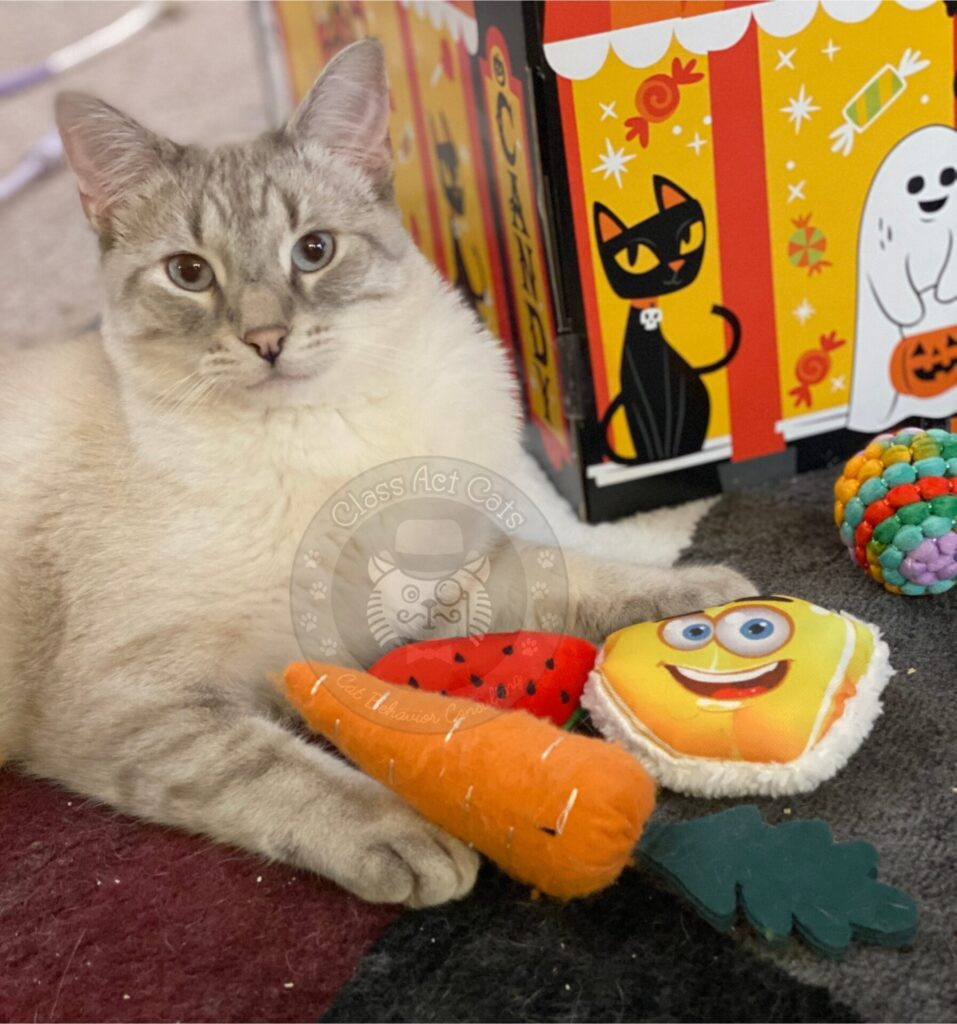Have you ever said, “My cat doesn’t like to play”? You might be surprised to learn that you’re likely mistaken. More often than not, it’s not that your cat dislikes playing altogether, but rather they aren’t enjoying how you’re playing with them, or they’re not interested in the toys you’re offering. Engaging a cat in playtime can sometimes feel counterintuitive, so if you find it challenging, you’re definitely not alone.
While having the right toys is crucial for successful play sessions, we’ll delve into that another time (check out our guide on picking the best cat toys). Today, we’ll concentrate on the actual process of playing with your cat. Let’s assume you’ve already chosen a fantastic cat toy, perhaps even the legendary Cat Dancer.
Seriously, if your feline friend hasn’t experienced the Cat Dancer, it truly is a top-tier cat toy.
Play Session Essentials
When you play with a cat, remember that the goal is to mimic a hunt. Imagine what your cat would naturally do if they were in the wild, stalking and capturing a delicious snack. While the thought of your cat as a predator might seem a bit intense, it’s essential to acknowledge their hunting instincts when engaging in play.
 A playful kitten surrounded by pink toys on a white carpet
A playful kitten surrounded by pink toys on a white carpet
Cute yet fierce. Photo by Kim Davies.
Cats are natural hunters of small prey like birds, insects, and mice. They typically engage in multiple short hunts throughout the day. Therefore, your play sessions should also be brief, ideally lasting between 5 to 15 minutes, spread across several sessions daily. While a long, intense play session might seem beneficial, especially for high-energy cats, shorter, more frequent bursts of play are actually more effective and align better with their natural hunting patterns.
During play, use a toy that you actively move to capture your cat’s attention, mimicking the movement of real prey. Toys simply scattered on the floor are essentially “dead prey” and won’t trigger the hunting instinct your cat needs to satisfy.
Understanding the Hunt Cycle
For your cat to fully engage their hunting instincts, a complete hunt cycle is necessary. This cycle encompasses several stages:
- Locating prey: Spotting something interesting to hunt.
- Stalking and planning: Observing and strategizing the approach.
- Chasing: The active pursuit of the prey.
- Catching: Successfully grabbing the prey.
- “Dispatching” the prey: The kill phase (simulated in play).
- Consuming the catch: “Eating” the prey (learn more about cat eating habits).
From experience, a common mistake people make is interrupting play during the stalking and planning phase. Cats might appear uninterested because they’re simply watching and assessing the toy without immediately pouncing. It might seem like they’re not engaged, but this observation phase is a crucial part of the hunt. As long as your cat is focused on the toy, they are actively participating and enjoying the process.
Another often-skipped step is the “consuming” phase. Fortunately, this is easily remedied. Conclude each play session by offering your cat a small meal or some delicious treats. You could also introduce a food puzzle afterwards to extend the hunting experience into mealtime.
Effective Cat Toy Techniques
One frequent error in how people play with cats is dangling a toy directly in front of their face. While it might seem like a quick way to grab their attention, it doesn’t mirror a natural hunt. Prey wouldn’t typically approach a predator and wave around invitingly. Furthermore, cats have poor close-up vision, making it difficult for them to clearly see toys held too close.
So, what’s a better approach? Move the toy from side to side or away from your cat. This movement more closely resembles the behavior of a mouse or other small creature in nature. Guiding the toy around objects, through a play tunnel, or into corners can also heighten your cat’s engagement, as they might perceive the “prey” as being cornered and easier to capture.
Add Variety to Play Sessions
To maintain your cat’s interest throughout a play session, it’s essential to vary your techniques. Adjust the speed of the toy’s movement. Start with fast, erratic motions, then slow down. Speed up again, then slow down once more. If you’re using a feathered toy like the Fukumaru feathered wand toy or Da Bird (both highly recommended by feline testers!), incorporate aerial movements, but ensure the “bird” eventually “lands.”
As the play session progresses, consider how real prey might behave as it tires or gets injured. Your cat is looking for cues that the prey is weakening, signaling a higher chance of a successful kill.
 A cat proudly carrying a fish in its mouth
A cat proudly carrying a fish in its mouth
Perhaps this blog post took a dark turn? Photo by Baris Yigit.
To simulate this, try moving the toy in an unpredictable, jerky manner. Incorporate sudden lurches and erratic movements. This can signal to your cat that the “prey” is vulnerable and ripe for the taking.
Utilize Undercover Tactics
We’ve discussed moving toys around objects and furniture. Another engaging technique is to move the toy under something. If your cat enjoys playfully attacking your toes under blankets, this style of play could be particularly appealing to them.
Try using a towel to move the toy underneath, or consider using a product like Sheer Fun For Cats. Poutine, in particular, loves pouncing and is a big fan of Sheer Fun For Cats!
 Poutine the cat surrounded by various cat toys
Poutine the cat surrounded by various cat toys
“I approve of most toys, human.” – Poutine
Engage Multiple Senses
Playing with your cat isn’t solely about sight and movement. To make playtime truly stimulating, engage their other senses as well.
Incorporate catnip, silver vine, or valerian root to stimulate your cat’s sense of smell during play. Sounds can also be highly engaging for many cats, provided they aren’t easily startled. Look for toys that crinkle, have bells, or consider the ever-popular chirping bird toys that cats adore. Alternatively, move the toy under crinkle paper or lightly tap it against the floor to create auditory interest.
Another exciting play idea is to use a large cardboard box. Place crinkle paper or newspaper inside and use a wand toy within the box to generate rustling sounds. Your cat’s natural curiosity should be piqued, prompting them to investigate the source of the noise. Alternatively, you can use a play tunnel or tent, many of which also produce crinkling sounds.
Bonus tip: After playtime, toss a small handful of kibble or treats into the box or tunnel to create a simple, homemade food puzzle, extending the engagement.
Keep Toys Fresh and Exciting
Does your cat initially love a toy, only to lose interest after a few days or a week? Or perhaps they engage for a few minutes during a play session and then seem bored?
This is perfectly normal cat behavior. Effective play with your cat involves rotating toys, both within a single play session and across multiple sessions over time. For cats who lose interest quickly during a session, keep several wand toys nearby so you can easily swap them out. Experiment with different play techniques from this guide to reignite their engagement. A wall-mounted wand toy holder can be incredibly convenient for quick toy changes during play.
Even for cats with longer attention spans, toy rotation is beneficial. After a week or so of using a particular toy, put it away and introduce a new one. After a few weeks, bring back the “old” toy – it will feel brand new to your cat, rekindling their interest and enthusiasm.
Time Play Sessions Strategically
Just as you might not feel like playing a board game right before bed (even a cat-themed one), timing is important for playing with your cat. Play when they are most receptive. While there’s some flexibility, certain times of day are naturally better for cat playtime.
 A cat silhouette against an orange sunset background with leaves
A cat silhouette against an orange sunset background with leaves
Sunrise and sunset are key. Photo by Saso Tusar.
Cats are crepuscular (a fun word to say!), meaning they are most active around sunrise and sunset. You can likely predict your cat’s prime playtime based on this natural rhythm. Playing with your cat first thing in the morning and again before bed aligns with their peak energy levels. Similarly, if your cat gets the zoomies at a specific time, seize that opportunity for play.
Another ideal time depends on your cat’s feeding schedule. As mentioned earlier, a small meal makes a great conclusion to a play session. Playing before feeding allows you to naturally wind down the play session and transition into mealtime. While playing after meals is also possible, playing beforehand is generally more satisfying and mimics their natural hunt-then-eat behavior.
A Note of Caution: Lasers and Electronic Toys
A comprehensive guide on playing with your cat wouldn’t be complete without addressing laser pointers and electronic toys.
I’m not entirely against them. Electronic toys can be useful, particularly for very energetic cats who need more playtime than you can personally provide. They shouldn’t replace active play with you, but they can supplement playtime when you’re busy or need to distract your cat temporarily. However, some can be noisy and frighten cats, and not all are designed with feline play preferences in mind.
Some electronic toys that often appeal to cats include the PetLibro mouse toy, the Hexbug remote control mouse, and the All For Paws Interactive Butterfly Toy.
The Problem with Lasers
You might notice that none of these recommended electronic toys use lasers. Lasers can be quite frustrating for cats, even if they seem to enjoy chasing the light. While it may appear they’re having fun, cats can never actually catch the laser. This lack of a successful “catch” can lead to unsatisfying play sessions.
If you choose to use a laser pointer, do so only briefly at the beginning of a play session and quickly transition to a tangible toy. Ideally, it’s best to avoid lasers altogether. But if you do use one, always finish the session by directing the laser onto a physical toy so your cat can “catch” something real. Avoid automatic laser toys, as they can’t facilitate this crucial “catch” at the end.
The Benefits of Playing with Your Cat Correctly
When you play with your cat in ways they genuinely enjoy, you’ll reap numerous rewards. Your cat will be less prone to boredom, happier overall, and less likely to develop behavioral issues, especially play-related problems like play aggression. However, not all play is equally beneficial. Prioritize playing with your cat in a manner that allows them to fully engage in their natural hunt cycle.
To further enhance your understanding of feline play, consider reading Mikel Delgado’s book, Play With Your Cat. For personalized advice or help with play-related behavioral challenges, I am available for consultations.
Need Help with Your Cat’s Behavior?
Schedule a Consultation
